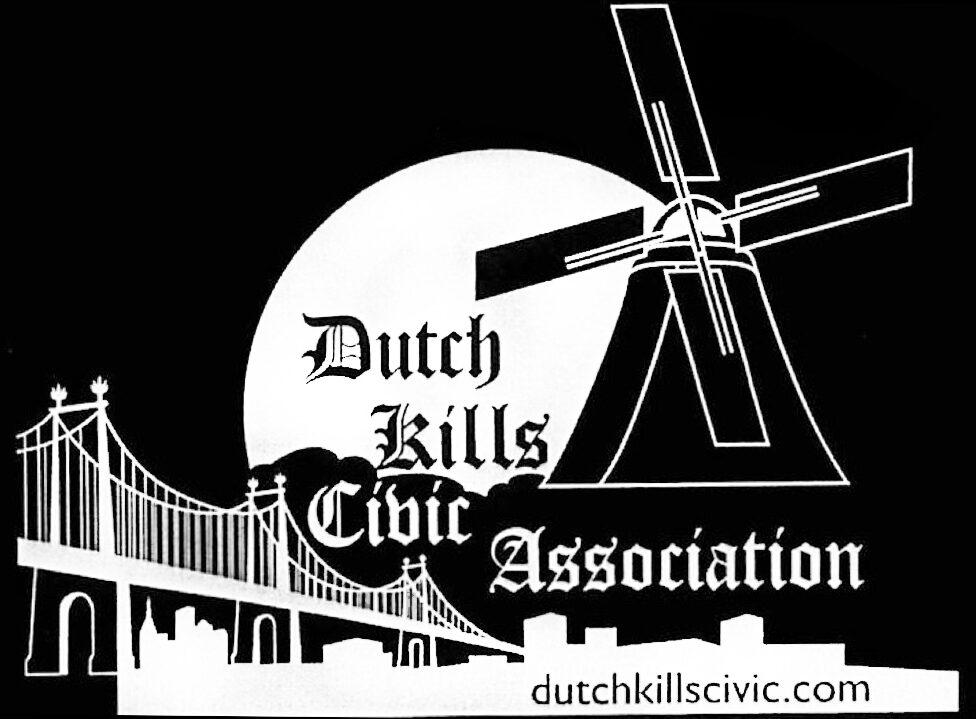History of Dutch Kills
In 1642, licenses were granted to some Dutch citizens to settle in Queens. “Kill” is a Dutch word meaning “little stream.” Since Dutch men settled around the “Kill,” (in Long Island City) the name Dutch Kills was adopted. The “Kill” (or stream) is a tributary of Newtown Creek, which divides Queens from Brooklyn.
During the Revolutionary War, British troops were billeted in a series of farmhouses on 39th Avenue (Beebe Avenue). These houses stood until 1903 when they were torn down to make way for the railroad. In the early 1900’s the Queensborough Bridge was opened. Proximity to Manhattan, presence of railroads, and Long Island all contributed to the importance of Dutch Kills.
Still, as “important” or “industrialized” as the community of Dutch Kills has become, its residents have never forgotten their history. So in 1979, when the Dutch Kills Civic Association was revitalized, organizers of the group adopted the Windmill as part of their logo, in tribute to those Dutch farmers who planted the seeds, thus establishing the future of a community. The Dutch Kills Civic Association logo was designed by Tina Maounis in 1980.
